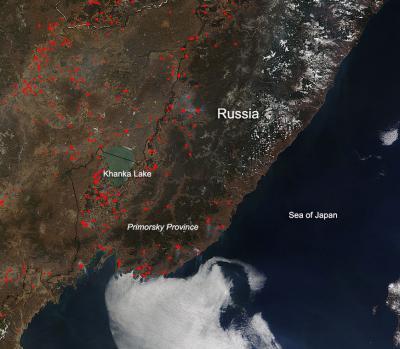One of the most influential ecological disturbances is fire. Fire can spread so rapidly and for such far distances that its impact on land is for the most part far greater than any other factor. Less than optimal logging practices in the Primorksy region worsen the problems of human-caused fires in this area. Abandoned fields with dry grasses provide the detritus that can fuel an out of control blaze with a single spark.
In southwest Primorsky Province dry grass has been burned for centuries. This uncontrolled method of managing agricultural areas each year turns the entire southern tip of Primorsky Province into an enormous firebed, enveloping up to 40 percent of the entire territory. As a result of the high frequency of human-caused fires, mixed forests are turning into scrub and sparse oak woods which give way to fields of grass and shrubs. The area of forest degradation is increasing, posing serious threats to certain species which may not be able to recover and which may become extinct.
Statistics on forest fire causes show that human activities are responsible for 94 percent of fires in this forest zone of the Russian Far East. The fire problem seems to be most acute in Russia, widespread in Mongolian grasslands, and common but not so detrimental in China.

This image is from NASA/Goddard, Lynn Jenner with information from the Amur Heilong River Basin Information Center supported by WWF Amur Branch.
(Photo Credit: NASA image courtesy Jeff Schmaltz, MODIS Rapid Response Team)
Source: NASA/Goddard Space Flight Center